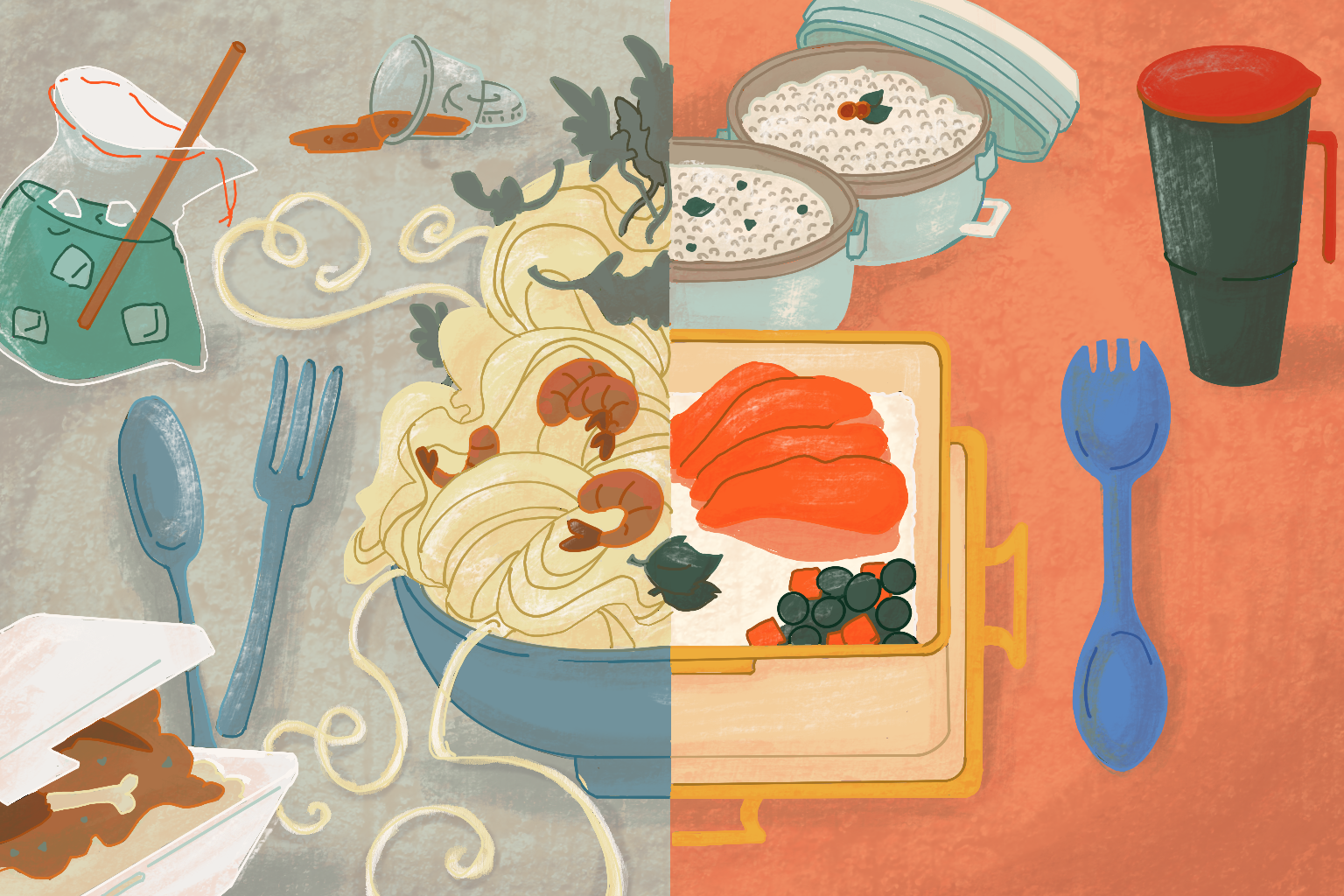BRANDED CONTENT
Ordering just enough and choosing reusables: Simple ways to reduce plastic and food waste
Embracing lifestyle changes like bringing your container and preparing a grocery list to reduce food wastage can go a long way to tackling Singapore’s waste challenge

A change in lifestyle choices can go a long way to reducing food wastage and plastic waste. ILLUSTRATION: SPH MEDIA
Follow topic:
Leftover rice or noodles, stale bread, blemished bananas – these seemingly small items in your home can accumulate into a significant issue when viewed on a larger scale.
In 2022, Singapore generated 813,000 tonnes of food waste, equivalent to about two bowls of rice per day, according to the National Environment Agency (NEA). Additionally, Singaporeans discarded 265 million kg of disposables, including plastic bags and food packaging. That is about 500 Olympic-sized swimming pools or 5,300 four-room Housing Board flats.
This is why every small step you take to reduce waste counts. The interactive guide below is designed to help you discover simple ways to reduce waste while saving money at the same time.
Avoid ordering excess food and bring reusables
Click on the items to find out how to reduce the waste you can generate in a hawker centre
ILLUSTRATION: SPH MEDIA
Food waste makes up nearly half of the daily waste produced by the average household in Singapore, amounting to approximately 1.5 kg per day. Notably, over half of this household food waste is avoidable, with staples like rice, noodles and bread being the most frequently discarded items.
Other simple lifestyle changes to adopt include keeping reusable containers and cutlery in the office so that you don’t need to ask for disposable containers. When ordering food from hawkers, check the portion sizes to prevent over-ordering.
Shop smart in your grocery run
Click on the items to find out how to reduce waste when grocery shopping
ILLUSTRATION: SPH MEDIA
Cutting down on disposables will contribute to mitigating climate change in the long run.
Since these disposables are typically manufactured using resources like fossil fuel, plants, water and energy, lowering their demand will help to conserve these valuable resources and cut the emission of greenhouse gases associated with the manufacturing process.
Store food properly in your kitchen
Click on the items to find out how to reduce wastage at home
ILLUSTRATION: SPH MEDIA
In addition to food and disposable waste, remember that you can also reduce other types of waste, such as sports equipment and household items.
For example, if you have an old bicycle, consider giving it a second chance. Decathlon Singapore's Second Life Project buys back items in good condition and gives them a new lease on life through repairs, refurbishment and reuse.
When shopping for daily necessities, opt for sustainability. Instead of purchasing new containers, consider refills for toiletries. Convenient refill stations for shower gel and shampoo are available at selected Watsons outlets, making it easy to top up on your skin-loving treats while cutting packaging waste. Check out more deals from Say YES to Waste Less partners here.
Making these simple changes to your daily routine not only reduces waste but also contributes to a more sustainable and environmentally friendly future.
Why you should Say YES to Waste Less
The Singapore Green Plan 2030 aims to cut down the amount of waste each person sends to Semakau Landfill, Singapore’s remaining landfill, by 20 per cent before 2026.
To help achieve this national goal, NEA started the Say YES to Waste Less movement in 2019, encouraging Singaporeans to reduce their use of disposables and avoid food wastage with simple changes to their habits and lifestyles that can lead to significant strides toward sustainability over time.
Visit the Say YES to Waste Less website for more ways to reduce disposable and food wastage.


